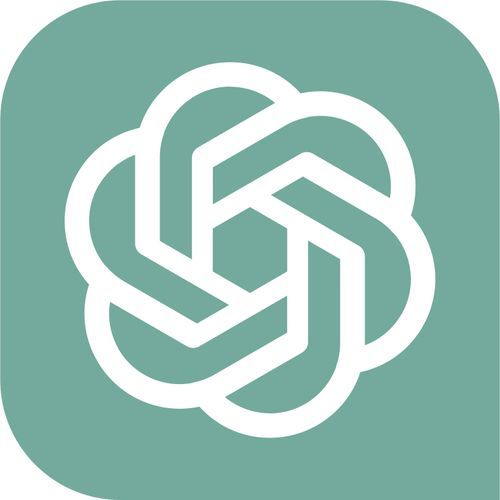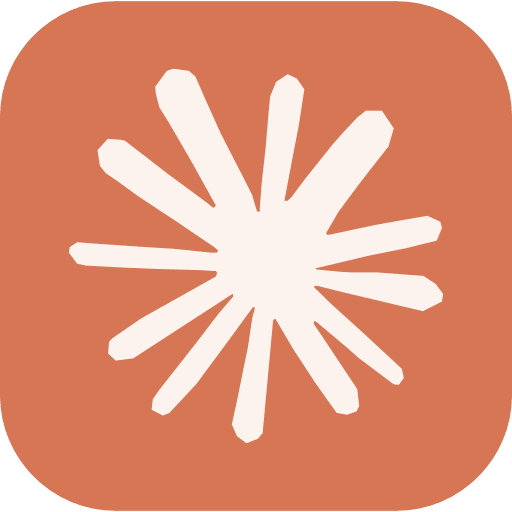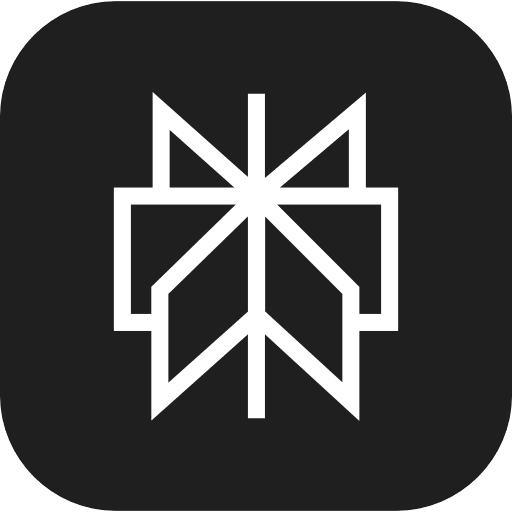Library of teambuilding games & icebreakers


River crossing
This game involves solving a hypothetical challenge. For this game, two teams work together to collect planks and get everyone in their group across a river. The trick is that the planks are magic and sink when not in contact with a person. This is a good way to facilitate critical thinking and work together as a team.
River crossing
How to play River crossing
This game involves solving a hypothetical challenge. For this game, two teams work together to collect planks and get everyone in their group across a river. The trick is that the planks are magic and sink when not in contact with a person. This is a good way to facilitate critical thinking and work together as a team.
Gallery



Video


Minute to Win It Challenges
Prepare for the Minute to Win It Challenges, where lightning-fast antics and friendly rivalry collide. These challenges ignite creativity, force adaptability, and unveil hidden talents as team members scramble to conquer the clock.
Minute to Win It Challenges
How to play Minute to Win It Challenges
Instructions: Set up a series of minute-long challenges where participants must complete a task using everyday objects. Examples include stacking cups or moving cookies from the forehead to the mouth using only facial muscles.
Materials needed: Everyday objects (cups, cookies, etc.).
Prepare for the Minute to Win It Challenges, where lightning-fast antics and friendly rivalry collide. These challenges ignite creativity, force adaptability, and unveil hidden talents as team members scramble to conquer the clock.
Gallery



Video


GIF challenge
This exercise is particularly fun for people who use communication tools like Slack. Provide the group with prompts, and ask them to find a GIF that demonstrates their reaction to it. Examples of prompts could be “How you feel when someone schedules a meeting at 4pm on Friday” or “When you figured out you stayed up too late binging Netflix before your big presentation.” The more creative, the better!
GIF challenge
How to play GIF challenge
This exercise is particularly fun for people who use communication tools like Slack. Provide the group with prompts, and ask them to find a GIF that demonstrates their reaction to it. Examples of prompts could be “How you feel when someone schedules a meeting at 4pm on Friday” or “When you figured out you stayed up too late binging Netflix before your big presentation.” The more creative, the better!
Gallery



Video


Safety slogan contest
Encourage employees to create catchy safety slogans that promote workplace safety. Have a panel of judges select the best slogans and award prizes to the winners. Display the winning slogans around the workplace.This activity taps into employees' creativity and gives them a sense of ownership over the safety culture. Seeing their own slogans around the workplace can be a source of pride and motivation. The next "Safety First!" slogan might just be around the corner.
Safety slogan contest
How to play:
Encourage employees to create catchy safety slogans that promote workplace safety. Have a panel of judges select the best slogans and award prizes to the winners. Display the winning slogans around the workplace.
This activity taps into employees' creativity and gives them a sense of ownership over the safety culture. Seeing their own slogans around the workplace can be a source of pride and motivation. The next "Safety First!" slogan might just be around the corner.
Gallery



Video


Photo caption contest
Pick out a funny meme or cool photo and ask everyone to come up with a clever caption. You can either have one person pick a winner, do so by committee, or share with the company and let audience applause dictate the most popular caption. This is a quick team-building activity and easy to put together, and a good option for when you have a short window of time to bring everyone together. This activity is an ideal choice if your current bandwidth only allows gathering everyone in the breakroom for an hour or so. Simply share the image the night before and let everyone bring their A-game in the morning.
Photo caption contest
How to host a Photo caption contest
Pick out a funny meme or cool photo and ask everyone to come up with a clever caption. You can either have one person pick a winner, do so by committee, or share with the company and let audience applause dictate the most popular caption. This is a quick team-building activity and easy to put together, and a good option for when you have a short window of time to bring everyone together. This activity is an ideal choice if your current bandwidth only allows gathering everyone in the breakroom for an hour or so. Simply share the image the night before and let everyone bring their A-game in the morning.
Gallery



Video


What are you doing?
Here’s a fast-paced improv game that encourages creative thinking and imbues energy into the room. It’s ideal for those Monday morning meetings when everyone’s feeling sluggish, or as a warm-up exercise on a team-building retreat!What Are You Doing revolves around miming – i.e. using gestures, body movements, and facial expressions to act something out. That’s one reason it’s so fun! It’s light-hearted, silly, and gets people moving.
What are you doing?
Here’s a fast-paced improv game that encourages creative thinking and imbues energy into the room. It’s ideal for those Monday morning meetings when everyone’s feeling sluggish, or as a warm-up exercise on a team-building retreat!
What Are You Doing revolves around miming – i.e. using gestures, body movements, and facial expressions to act something out. That’s one reason it’s so fun! It’s light-hearted, silly, and gets people moving.
How to play What are you doing?
To play, you get everyone to stand in a circle, then ask one person to imagine a certain action and start miming it. The action itself can be anything they want! Washing the dishes, taking the kids to school, throwing a baseball, brushing their hair, cleaning their teeth…the world is their oyster.
After a short while, someone else steps forward and asks, “What are you doing?”
The twist is that whoever’s miming must say a completely different action to the one they’re doing! Instead of cleaning their teeth, for example, they could say they’re putting their shoes on or amputating someone’s leg. Whoever stepped forward to ask what they were doing must then perform that action.
This process continues until everyone has had a turn miming. Try to keep the game moving and encourage people to be creative with the actions/responses.
Oh, and feel free to add another element to the game, whereby you decide who goes next. Rather than going around the circle or jumping in whenever they want, you could point at the next mime – or make eye contact with them.
Heads up, this game is best for smaller groups if you don’t have much time to spare. You want everyone to have a go miming an action, which can take a while when you have dozens of people on the team!
Gallery



Video


Back-to-back drawing
The perfect game for the artists on the team, Back-to-Back drawing encourages play and communication and would be an excellent activity for a company retreat. This team-building exercise is less about problem-solving and relaxing and getting the chance to get to know one another.
Back-to-back drawing
The perfect game for the artists on the team, Back-to-Back drawing encourages play and communication and would be an excellent activity for a company retreat. This team-building exercise is less about problem-solving and relaxing and getting the chance to get to know one another.
How to play:
Have players split into two teams and face away from one another. One player gets a picture, and the other receives paper and drawing materials. The person with the image describes what and how to draw the image without identifying it. After ten minutes, players swap roles.
After each team member has described the object and produced an image, they can compare their work and see who made the most accurate drawing.
Materials you’ll need: Art supplies and simple images (think flowers, cars, etc.) taken from a magazine or printed online.
How many people: Small to mid-sized teams (8-16 people)
Gallery



Video


Trivia Time!
Get ready for Office Trivia, the brain-boggling showdown that proves knowledge is power and a hilarious conversation starter. It's a crash course in camaraderie, where teammates unite to celebrate their shared team culture and flex their mental muscles. Prepare to be enlightened, dazzled, and maybe even shocked by your team's epic achievements.
Trivia Time!
How to play Trivia Time!
Instructions: Prepare a set of trivia questions about the company's history, products, or famous employees. Divide participants into teams and ask questions. The team with the most correct answers wins.
Materials needed: Trivia questions, answer sheets.
Get ready for Office Trivia, the brain-boggling showdown that proves knowledge is power and a hilarious conversation starter. It's a crash course in camaraderie, where teammates unite to celebrate their shared team culture and flex their mental muscles. Prepare to be enlightened, dazzled, and maybe even shocked by your team's epic achievements.
Gallery



Video


Mental gymnastics
This game is all about mental energy. Easy to play and can be done anywhere from a break room, to the office common space, mental gymnastics can be any type of quick trivia game, even including Pictionary if you have a lot of artists on your team.
Mental gymnastics
This game is all about mental energy. Easy to play and can be done anywhere from a break room, to the office common space, mental gymnastics can be any type of quick trivia game, even including Pictionary if you have a lot of artists on your team.
Perfect for teams, trivia encourages employees to work together, relying on their smarts and pop culture knowledge. You can even make the game workplace specific and test how much your team knows about one another, ultimately bringing them closer together.
Gallery



Video


Balloon challenge
Start this fun and active energizer by inflating lots of balloons in the office (the more the merrier!). When you’re done, the challenge can commence:The team’s job is to stop the balloons from touching the ground at all costs! Play for 5 to 10 minutes and explain there’ll be prizes if they succeed.
Balloon challenge
How to play Balloon challenge
Start this fun and active energizer by inflating lots of balloons in the office (the more the merrier!). When you’re done, the challenge can commence:
The team’s job is to stop the balloons from touching the ground at all costs! Play for 5 to 10 minutes and explain there’ll be prizes if they succeed.
Want to give the game a competitive edge? Divide everyone into smaller teams and assign each one a bunch of balloons with the same color. They then have to work together to keep those particular balloons in the air (while simultaneously sabotaging the other teams’ efforts).
Bonus points if you can inflate all the balloons before anyone else arrives at the office! Trust us, the look on peoples’ faces when they walk through the door will be worth getting there early…
Gallery



Video


Dance-freeze
A very popular high-energy game, this one is great for students and teams. You’ll need music that you can dance to and participants that aren’t too shy about dancing. The concept is simple: everyone must dance when music is playing. When the music stops, everyone must freeze just as they were when they were in motion. Anyone who keeps dancing is out of the game and it continues until there is a single winner.
Dance-freeze
How to play Dance-freeze
A very popular high-energy game, this one is great for students and teams. You’ll need music that you can dance to and participants that aren’t too shy about dancing. The concept is simple: everyone must dance when music is playing. When the music stops, everyone must freeze just as they were when they were in motion. Anyone who keeps dancing is out of the game and it continues until there is a single winner.
Gallery



Video


Safety poster competition
Provide materials for employees to create safety posters that highlight important safety messages or procedures. Display the posters around the workplace and have a voting process to select the best ones. Offer prizes for the top posters.This activity promotes creativity and personal investment in workplace safety. Employees get to showcase their artistic talents while contributing to a safer work environment. The posters serve as ongoing reminders of safety practices long after the competition ends.
Safety poster competition
How to play:
Provide materials for employees to create safety posters that highlight important safety messages or procedures. Display the posters around the workplace and have a voting process to select the best ones. Offer prizes for the top posters.
This activity promotes creativity and personal investment in workplace safety. Employees get to showcase their artistic talents while contributing to a safer work environment. The posters serve as ongoing reminders of safety practices long after the competition ends.
Gallery



Video


Collaborative portraits
One of the hardest parts of joining or working in a large group is remembering everyone’s name! Collaborative Portraits is a warm-up activity that helps tackle the problem, while also providing an entertaining way to get to know your colleagues.
Collaborative portraits
One of the hardest parts of joining or working in a large group is remembering everyone’s name! Collaborative Portraits is a warm-up activity that helps tackle the problem, while also providing an entertaining way to get to know your colleagues.
How to play Collaborative portraits
To run the exercise, hand out a piece of paper and pen to everyone in the group and ask participants to write their names at the bottom. They should then start walking slowly around the room.
When you say “stop”, they must find someone nearby, swap their pieces of paper, and draw their partner’s eyes. When that’s done, they swap back (so they’re holding the paper with their name on it).
You then repeat this process for the remaining facial features (i.e. nose, ears, mouth, hair, chin, accessories, etcetera…). By the end of the task, everyone should be holding a full “self-portrait” that’s been drawn by their colleagues!
Top tip: Consider displaying these drawings somewhere in the office. It’d be a fun memory of the exercise and could become a decorative focal point for people to look at in idle moments.
Gallery



Video


Themed photo contest
This is a fun competition that can be interactive and bring out everyone’s creativity. Host a contest where everyone can submit photo entries for the chance to win a prize. Start with a theme such as hometown history, sci-fi, or any other subject that your coworkers would find interesting. Invite employees to post photos on social media either in a private group you created, or on your public pages with a special hashtag. This way staff can see other entries and gauge their competition! Award prizes based on the number of likes for each photo. You could also come up with some separate prizes like “most creative”.
Themed photo contest
How to host Themed photo contest
This is a fun competition that can be interactive and bring out everyone’s creativity. Host a contest where everyone can submit photo entries for the chance to win a prize. Start with a theme such as hometown history, sci-fi, or any other subject that your coworkers would find interesting. Invite employees to post photos on social media either in a private group you created, or on your public pages with a special hashtag.
This way staff can see other entries and gauge their competition! Award prizes based on the number of likes for each photo. You could also come up with some separate prizes like “most creative”.
Gallery



Video


Penguins and flamingos
This activity captures the magic of youth and gives everyone a chance to stretch their legs. One player acts as a flamingo and then everyone else is a penguin. Their goal is to “peck” one person on the head and make them a flamingo. The last person to remain a penguin wins!
Penguins and flamingos
How to play Penguins and flamingos
This activity captures the magic of youth and gives everyone a chance to stretch their legs. One player acts as a flamingo and then everyone else is a penguin. Their goal is to “peck” one person on the head and make them a flamingo. The last person to remain a penguin wins!
Gallery



Video


Online (useless) talent show
Here’s a game that aims to draw out hidden talents among your teams. Ask each person in the next virtual meeting to showcase a talent they have. The only thing is, a lot of people might feel they have no hidden talents to show, so by calling it a ‘useless’ talent show, you might help reduce any pressure that is felt. Allow them to be as random and creative as they wish. Older talent videos from the 2000s had some creative gems, like the famous Daft Hands. Simplicity is key for a talent show, as well as an atmosphere of zero pressure, so give a (useless) talent show a shot in your next virtual happy hour.
Online (useless) talent show
How to play Online (useless) talent show
Here’s a game that aims to draw out hidden talents among your teams. Ask each person in the next virtual meeting to showcase a talent they have. The only thing is, a lot of people might feel they have no hidden talents to show, so by calling it a ‘useless’ talent show, you might help reduce any pressure that is felt.
Allow them to be as random and creative as they wish. Older talent videos from the 2000s had some creative gems, like the famous Daft Hands. Simplicity is key for a talent show, as well as an atmosphere of zero pressure, so give a (useless) talent show a shot in your next virtual happy hour.
Gallery



Video


Minefield
Minefield is a fun energization game that improves communication and listening skills. All you need is an open space and a bunch of soft-edged objects.
Minefield
Minefield is a fun energization game that improves communication and listening skills. All you need is an open space and a bunch of soft-edged objects.
Great for: Listening skills, communication, energization
Duration: 10–15 minutes
You’ll need: Various soft objects like balloons, foam blocks, plastic cups, etc.
How to play:
- Divide your group into teams of about 4–5 players and blindfold one player from each team.
- Spread out your soft-edged objects throughout the space.
- Ask the teams to stand at one end of the room.
- When you shout “Go!” the blindfolded player must make their way to the other side of the room without touching any of the objects on the floor. The players without blindfolds are allowed to give verbal commands to the blindfolded player. They are NOT allowed to touch or guide the blindfolded player in any way.
- The team to reach the other side of the room first without touching any of the objects wins. If a team touches an object, they must return to the start.
Gallery



Video


Linkword
Here’s a letter game that has some great online worksheets to get teams started. This fast-paced brain teaser has teams thinking laterally. You might want to create teams for this one, as some examples can really get people scratching their heads.Your teams will look at three words and have to decide on one word that connects all three. Common words are the aim of the game. Let’s say for example you show them the words “POINT,” “SAFETY,” and “CUSHION”. All three of these words can be connected with the word “PIN,” forming “pinpoint,” “safety pin,” and “pin cushion.” Try this one out with your teams.
Linkword
How to play Linkword
Here’s a letter game that has some great online worksheets to get teams started. This fast-paced brain teaser has teams thinking laterally. You might want to create teams for this one, as some examples can really get people scratching their heads.
Your teams will look at three words and have to decide on one word that connects all three. Common words are the aim of the game. Let’s say for example you show them the words “POINT,” “SAFETY,” and “CUSHION”. All three of these words can be connected with the word “PIN,” forming “pinpoint,” “safety pin,” and “pin cushion.” Try this one out with your teams.
Gallery



Video


Virtual gratitude wall
Utilize the power of digital whiteboards that allow you to save your groupwork, creating a mural of positivity through a virtual gratitude wall. This simple idea brings a stronger sense of unity in teams and solidifies team morale.Look for a digital whiteboard, or go a step further and get on a collaboration platform like Padlet, letting users add sticky notes and share videos. The emphasis is on positive reinforcement and morale-boosting through remembering what we’re grateful for. Try this one out to get a positive atmosphere flowing.
Virtual gratitude wall
How to play Virtual gratitude wall
Utilize the power of digital whiteboards that allow you to save your groupwork, creating a mural of positivity through a virtual gratitude wall. This simple idea brings a stronger sense of unity in teams and solidifies team morale.
Look for a digital whiteboard, or go a step further and get on a collaboration platform like Padlet, letting users add sticky notes and share videos. The emphasis is on positive reinforcement and morale-boosting through remembering what we’re grateful for. Try this one out to get a positive atmosphere flowing.
Gallery



Video


Office “Great race”
Have you watched The Great Race? It’s a competition show where teams race around the world competing various tasks, finding out what their next task is when they complete one. You can create your own version in your office and have teams go on a quest before ending at a finish line. You can make a day of it, or break things up over a few weeks.
Office “Great race”
How to play Office “Great race”
Have you watched The Great Race? It’s a competition show where teams race around the world competing various tasks, finding out what their next task is when they complete one. You can create your own version in your office and have teams go on a quest before ending at a finish line. You can make a day of it, or break things up over a few weeks.
Gallery



Video


Backwards Goal Setting
Ever wish you had a roadmap to success that's so clear it practically unfolds itself? Well, here's a twist on traditional goal-setting – the Backward Goal Setting activity. Instead of starting at square one and plotting your course forward, imagine you've already reached the pinnacle of success. What does it look like? Now, work backward to identify the steps and milestones that got you there. This technique transforms lofty long-term goals into manageable, bite-sized chunks. It's like reverse-engineering success – a strategic approach that breaks down the journey into actionable tasks, helping you pave the way to your objectives with confidence. Top Tips For Facilitators: Encourage participants to break big goals into small, manageable steps. Sometimes the big goals can get overwhelming! Plans can change, and that's okay. Let know that they need to be adaptable to unexpected shifts. Share stories of success with backward goal setting for inspiration. Perhaps an employee from a different department or an inspirational figure online!
Backwards Goal Setting
Ever wish you had a roadmap to success that's so clear it practically unfolds itself? Well, here's a twist on traditional goal-setting – the Backward Goal Setting activity. Instead of starting at square one and plotting your course forward, imagine you've already reached the pinnacle of success. What does it look like? Now, work backward to identify the steps and milestones that got you there.
This technique transforms lofty long-term goals into manageable, bite-sized chunks. It's like reverse-engineering success – a strategic approach that breaks down the journey into actionable tasks, helping you pave the way to your objectives with confidence.
Top Tips For Facilitators:
- Encourage participants to break big goals into small, manageable steps. Sometimes the big goals can get overwhelming!
- Plans can change, and that's okay. Let know that they need to be adaptable to unexpected shifts.
- Share stories of success with backward goal setting for inspiration. Perhaps an employee from a different department or an inspirational figure online!
Gallery



Video


Environmental Quest for Sustainability
Step up for a cause and embark on an Environmental Quest for Sustainability. In this expedition, your team isn't just exploring; you're on a mission to make a positive impact. Navigate through eco-conscious challenges that shed light on pressing environmental issues. From picking up litter to creatively repurposing materials, you'll not only learn about sustainability but actively contribute to a cleaner planet. This offsite activity isn't just about teamwork; it's about leaving a green footprint in the world.
Environmental Quest for Sustainability
Step up for a cause and embark on an Environmental Quest for Sustainability. In this expedition, your team isn't just exploring; you're on a mission to make a positive impact. Navigate through eco-conscious challenges that shed light on pressing environmental issues. From picking up litter to creatively repurposing materials, you'll not only learn about sustainability but actively contribute to a cleaner planet. This offsite activity isn't just about teamwork; it's about leaving a green footprint in the world.
Instructions
- Form teams and provide each with eco-friendly tools.
- Design challenges related to recycling, conservation, or green initiatives.
- Teams execute tasks that contribute to a cleaner environment.
- Document before-and-after results to showcase your impact.
- Reflect on the experience and brainstorm further sustainable actions.
Gallery



Video


Direction direction
Think you’re good at following directions? This game will test how good you are, testing your communication skills, so you follow the right directions.
Direction direction
Think you’re good at following directions? This game will test how good you are, testing your communication skills, so you follow the right directions.
How to play:
Pick one person from your team who will pick a game or activity that is complex or hard to follow. After reading the directions out loud to the rest of the group, everyone else will attempt to play the game only based on what the speaker has told them. They will have to work together and communicate to figure out how to play correctly.
Afterward, the leader and team can briefly discuss where there were any communication breakdowns and what could have been improved.
Materials you’ll need: A game with complex directions
How many people: Small to mid-sized teams (8-16 people)
Gallery



Video


Desk set makeover
Surely you can only do this with everyone in the office, right? Well, not necessarily! To involve remote employees, they can take photos or videos of their home workspaces and submit them for a virtual desk makeover challenge. In-office employees can redesign each other’s desks, while remote participants can provide feedback, suggest ideas, or make digital mood boards for their teammates’ workspaces. The final makeovers—whether physical in the office or digital enhancements for remote setups—can be shared in a virtual gallery for everyone to vote on.
Desk set makeover
How to play Desk set makeover
Surely you can only do this with everyone in the office, right? Well, not necessarily!
To involve remote employees, they can take photos or videos of their home workspaces and submit them for a virtual desk makeover challenge. In-office employees can redesign each other’s desks, while remote participants can provide feedback, suggest ideas, or make digital mood boards for their teammates’ workspaces. The final makeovers—whether physical in the office or digital enhancements for remote setups—can be shared in a virtual gallery for everyone to vote on.
Gallery



Video

















